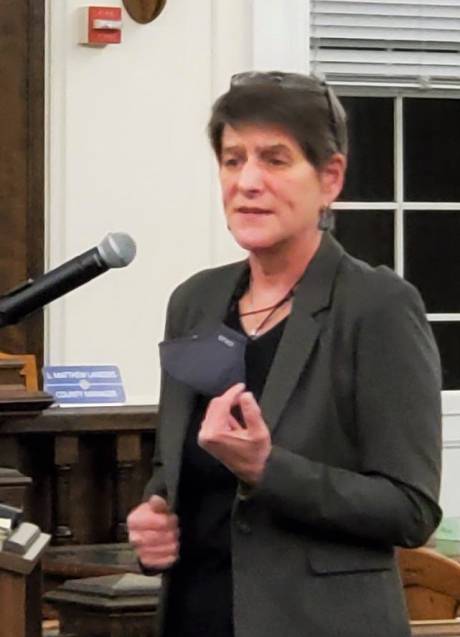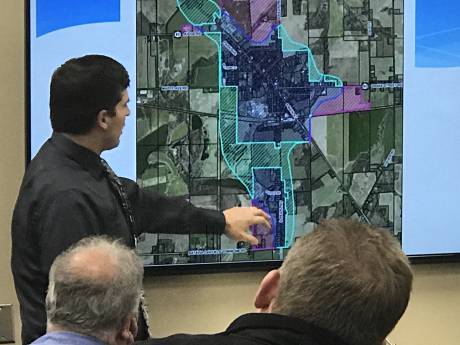Genesee County is talking Smart Growth, offering online meetings
Genesee County’s Planning Department is ready to review and discuss a draft 2022 Smart Growth Plan report that’s available to the public.
The Department will be conducting three online Zoom meetings over the next two weeks for anyone interested in signing up for one of them. The report can be viewed HERE.
Meetings are scheduled for 2 p.m. Tuesday, and 6:30 p.m. Thursday, and 6:30 p.m. Aug. 31. They may count for one hour of land use training credits for planning and zoning board members. To register and obtain the Zoom link, email your name, desired date, and if you would like a training certificate to: Felipe.Oltramari@co.genesee.ny.us
What’s the Smart Growth Plan?
On May 9, 2001, Genesee County Legislature adopted the Smart Growth Plan, which is "a mitigating action of potential significant environmental impacts of the Genesee County Water Supply Project upon the viability of agriculture in Genesee County," according to the County Planning Department Director Felipe Oltramari.
Smart Growth Development Areas were designated throughout the county based on their access to transportation, minimal conflict with County Agricultural Districts, and state-regulated wetlands, feasibility of extending public water service, and the potential for extending public infrastructure to support development, Oltramari said.
The Plan requires that it be reviewed every three years by the Legislature and that recommendations for its revision be made at that time.
2022 Review Highlights
During this review, the Towns of Byron and Pembroke proposed changes to the Smart Growth Development Area Boundaries. One substantive text change is also being proposed as part of this review. The meeting will focus on the modifications being recommended to the County Legislature by the County Planning Department.
According to the Smart Growth report, Phase 1 of the County Water Supply project has been completed, and Phase 2 work is ongoing. Map 1 in the report shows the existing waterlines and the Smart Growth Development Areas prior to the revisions recommended in this report. The majority of water hookups that have been made to the system have occurred mainly along major state highways and county highways.
Although some have been made in agricultural production areas, they have complied with the Smart Growth Plan’s objectives by hooking up only existing structures to public water. The majority of the hookups made were located within the Smart Growth Development Areas designated by the Legislature.
Since 2019, there have been 15 additional requests for hookups outside of the Development Areas to structures built after the adoption of the Smart Growth Plan. This brings the total number of these special requests to 68. After careful consideration given to their potential adverse impacts on agriculture and farming in the area, the Administrative Review Committee approved 12 of the 15, denied two, and tabled one of the requests that was later withdrawn by the applicant.
As a result of this review, and based upon existing comprehensive plans, local planning initiatives, and comments received during the public review process, it is recommended that the boundary of the Priority Development Area be amended in the hamlets of Byron, South Byron and North Byron and a new Priority Development Area be created on Lyman and Beaver Meadow roads in the Town of Byron.
No other changes are recommended in the development areas of the other municipalities in Genesee County (see Map 2). This review also amends the Policies and Procedures for Managing Water Hookups section of the plan by recommending that the Genesee County Legislature pass a local law that when any purchase and sale contract is presented for "the sale, purchase, or exchange of real property located in any town outside of a village (or the City) within the Genesee County, a Smart Growth disclosure notice is required to be signed by both the seller(s) and the buyer(s) acknowledging that Smart Growth is in effect and that new construction may not have the guaranteed right to public water."
This notice will help educate buyers of land about the Smart Growth Plan impacts on access to public water for new non-agricultural development. the report states.
The objectives of the Smart Growth Plan are to:
- Focus County resources to support economic development opportunities in the most promising locations;
- Encourage the revitalization of existing industrial areas, business districts, and residential neighborhoods in the City of Batavia and developed village areas; and
- Protect farmland and the rural character of the countryside, and maintain the viability of agriculture.
These objectives are consistent with the general principles of Smart Growth to promote the efficient use of land resources and infrastructure; maximize the benefit of existing infrastructure; promote economic development in appropriate areas; encourage revitalization within the City of Batavia, villages and other developed areas, focusing on residential neighborhoods, downtown redevelopment, and the re-use of environmentally damaged lands; protect prime agricultural soils and other natural resources and encourage the continued viability of agriculture according to the Smart Growth America Building Better Budgets Report from May 2013.
In general, smart growth development costs one-third less for upfront infrastructure, saving an average of 38 percent on upfront costs for new construction of roads, sewers, water lines and other infrastructure. Many studies have concluded that this number is as high as 50 percent.
Priority Development Areas include areas with significant potential for economic development as well as areas that are already relatively densely developed with housing, commercial or industrial uses. These areas were identified based upon the following criteria:
- Access to transportation, including the Interstate Highway System, the State highway network, and the Genesee County Airport;
- Feasibility of extending or enhancing public water service;
- Availability or potential for extending other public infrastructure and services to support development;
- Minimal conflict with land in County Agricultural Districts and State regulated wetlands; and
- Minimal conflict with land identified as an Ecological Network or Natural Asset Core by the Green Genesee Smart Genesee Project.
Designated Priority Development Areas include land in and surrounding the City of Batavia, Village of LeRoy and Village of Bergen, and other villages and hamlets in Genesee County.
To learn more about the report and future of Genesee County’s water project, click HERE for the report.


